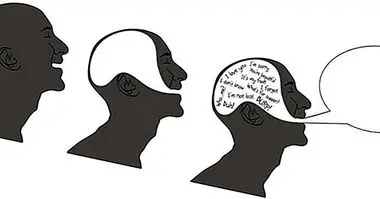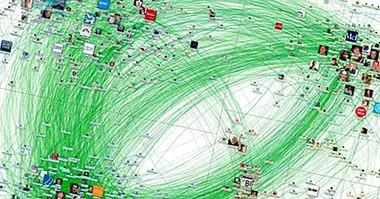Synesthesia, people with the ability to see sounds and taste colors
It is quite evident that, for most people, receiving light on the retina means having a visual sensation, just as making something come into contact with our skin generates a tactile sensation or receiving sound waves over our ears. It makes us hear something. However, this outline of events is not always so simple.
There are some people who experience a phenomenon called synesthesia , consisting of perceive sensations originating from several sensory channels .
Where synesthesia occurs, one type of stimulation evokes the sensation of another. In this way, some synaesthetic people they can see sounds, while others can taste tactile sensations, etc. For example, one of the best known cases is that of physicist Richard Feynman, who said see equations in colors , but the range of combinations of sensations that can be produced as a form of synesthesia is really very broad: sounds that generate flavors, numbers and letters that are perceived as colors, etc.
Why is synesthesia produced?
A large part of the community of neuroscientists in charge of studying synesthesia believe that it is produced by a kind of "crossover". Thus, they propose the explanation that at the moment in which this phenomenon occurs, vA few channels of neurons associated with different senses interfere with each other , so that the information of the surrounding medium that arrives through a sensory organ reaches the brain and transforms into another type of sensation.
Hence, people who experience this see mix their senses involuntarily and without being able to consciously regulate this transfer of information from one sensory type to the other, and hence also that there may be cases in which blind synesthetic people can continue to experience colors at the same time. touch, hear, etc.
Synesthetic people may have a somewhat unique brain
In short, the brain of people who experience synesthesia it seems to have an architecture somewhat different from the rest of the population Although that does not mean that your nervous system is damaged or that you are less able to live a normal life and autonomously. In fact, because of the automatic and partially unconscious nature of synaesthesia, it is not uncommon for a person to have been mixing sensations all his life and not realizing what is peculiar to him or what happens to him. world.

How widespread is synesthesia?
Synesthesia, under its different forms and types, is not something that rarely happens in those people who experience it, and that is why it is possible to assimilate well and consider the normal way of perceiving reality, since it is part of the day to Many people's day.
The fact that many people are synesthetic without being aware of it makes it difficult to calculate the percentage of the population that is, but recently there have been indications that the synesthesia is surprisingly widespread . It could be part of the daily life of 4 or 5 of every 100 people, much more than what was believed at the end of the 20th century, being the most frequent type the one consisting of associate days with colors . In addition, interestingly, it is more widespread in people with autism, which in the future may provide clues to understand the origin and causes of this type of disorders.
Are we all synesthetic?
Something to keep in mind is that there are phenomena very similar to synesthesia that are very generalized, which may mean that almost all of us are synesthetic to a lesser or greater extent .
For example, it is very normal to associate angled and sharp shapes with sounds like the letter "k", while the rounded contours are easier to relate to the sound of the "b", although this does not respond to any type of logical reasoning. This type of thinking has also been called by psychologists as cognitive biases. You can learn more about this by reading this article:
"Cognitive biases: discovering an interesting psychological effect"The same goes for many other elements of our day-to-day life: we talk about acid humor, sharp tongues, etc. In case the hypothesis that these phenomena are mild cases of synesthesia, our way of understanding the normal functioning of sensory pathways would be revealed as something more complex than we thought .
Bibliographic references:
- Baron-Cohen, S., Johnson, D., Asher, J., Wheelwright, S., Fisher, S.E., Gregersen, P.K., Allison, C. (2013). Is synaesthesia more common in autism? Molecular Autism, 4 (1), p. 40
- Simner, J., Mulvenna, C., Sagiv, N., Tsakanikos, E., Witherby, S.A., Fraser, C. Scott, K. Ward, J.(2006). Synaesthesia: The prevalence of atypical cross-modal experiences. Perception, 35 (8), pp. 1024-1033.
- Steven, M. S. and Blakemore, C. (2004). Visual synaesthesia in the blind.Perception, 33 (7), pp. 855-868.



















